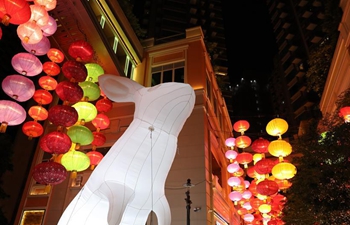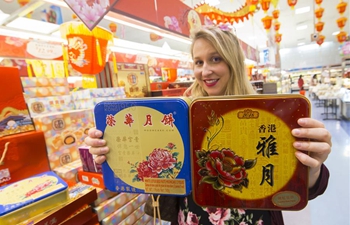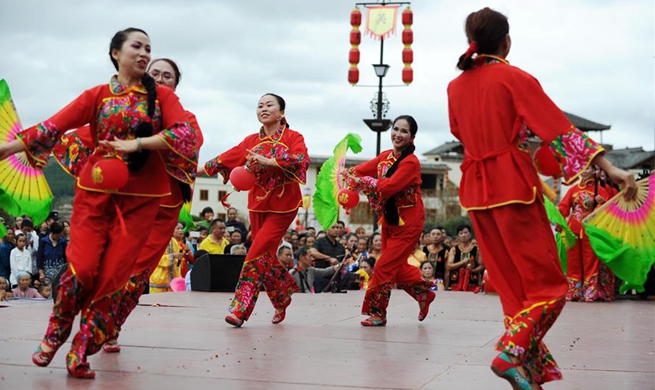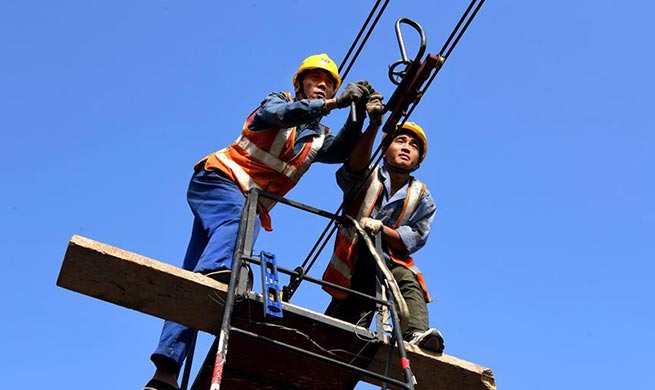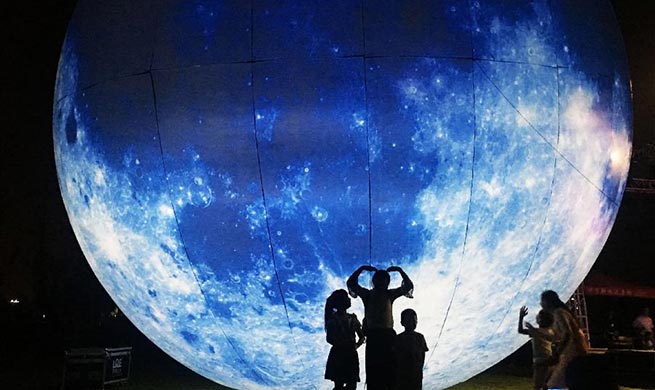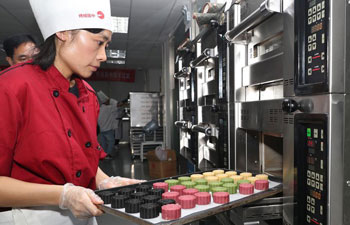TAIPEI, Sept. 24 (Xinhua) -- A single slide might not look like much when fit in a 5x5 cm of cardboard that is slightly bigger than a piece of jigsaw puzzle. Yet a total of 147 such slides piece together unfading memories of architecture in Taipei.
"In the 19th century, a lot of Taiwan's camphor was exported to Europe, not to make mothballs but rather celluloid film," recounted Li Chien-lang, a Taiwanese architecture scholar, when describing the history of slides and his personal experiences of using slides to capture some of Taipei's oldest buildings.
A collection of 147 slides, all photographed by Li between 1970 and 2010, is being exhibited until April 2019 at Museum 207 in Dadaocheng, a historic neighborhood in western Taipei.
Slides, known as positive color film, better preserve the vivid colors of the original compared to the negatives that are more commonly used. Thus, they are considered a better choice for architecture photography.
But Li remembers his early days of taking photos as a costly experience. "A camera cost me three months' salary, not to mention the film and the cost to develop the photos."
It was also time-consuming. "Very often I only took two photos for each building. I had to stand there and look long and hard before I pressed the shutter," Li recalled. "Pressing the shutter often caused my heart to race because you didn't know if the photo would be a successful one."
OLD MEMORIES COME TO LIFE
The collection features some famous old buildings in Taipei and important moments in the city's the architectural history, such as the old Taipei train station being demolished in 1985.
Li Ling-Ling, who was born and raised in the Dadaocheng district, was one of the earliest visitors to the exhibition. She found photos of her primary and middle schools. "This is the Red Building, as we called it, of my alma mater. It was taken down years ago," said Li, in her 50s, while pointing to a photo on the wall.
For the twenty- and thirty-somethings, the slides are not entirely obsolete. "When I was in school, the teachers used slides when teaching. It is seldom seen today," said Lin Shih-feng from Taipei.
Lin spent quite some time in the room where the slides were being projected on to a big screen. "It was very touching to see that some buildings still look the same as they did in the old photos. They have been fully taken care of," Lin said.
In fact, the venue of the exhibition, Museum 207, was renovated from a pharmacy built in 1962. The district, Dadaocheng, dates back to the 1850s and is full of historical landmarks.
"I don't see nostalgia as a waste of time," said Li the architectural scholar. "With these pictures, we try to restore the truth, trace back the history and analyze and discuss a story. Stories are necessities. Without stories, human civilization is nothing."
SLIDES VS. VINYL RECORDS
Some very rare slide projectors from Li's collection are also being showcased at the exhibition. Visitors are able to enjoy slides in various ways -- by projections, hands-on and via a slide viewer or on a light table.
Although slides can preserve colors for decades, they need to be kept away from mildew and in an environment with strictly monitored temperatures and humidity control, explained Li.
Li believes that this type of photography will not disappear. "I recently visited a record shop in the U.K. that was selling newly-pressed vinyl records because some people think the sound of the CD has little depth," he said. For him, like vinyl, slides have a distinct charm giving it a strong chance to survive in this new digital era.






